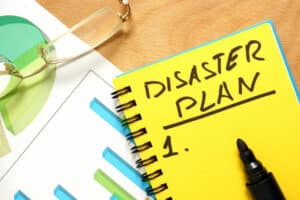 Disasters are reality in this day and age. According to recent data, the number of significant disasters, where at least 10 people were killed, has been rising steadily since the 1970s. For example, Hurricane Katrina in 2005 caused an estimated $200 billion in damage and is considered the costliest natural disaster in U.S. history.
Disasters are reality in this day and age. According to recent data, the number of significant disasters, where at least 10 people were killed, has been rising steadily since the 1970s. For example, Hurricane Katrina in 2005 caused an estimated $200 billion in damage and is considered the costliest natural disaster in U.S. history.
Unfortunately, older Americans are usually not prepared for a natural disaster. A 2014 study by the University of Iowa College found that less than 25% of older adults have a plan for how they’ll handle a natural disaster. Many older Americans are overly confident that services personnel can provide assistance during a natural disaster. Oftentimes, that is not possible, as emergency service personnel can be over capacity during a natural disaster.
Here are some tips on how to prepare for a disaster:
1. Compile important information
When a natural disaster hits, you want to be able to provide information to the relevant people quickly. Often, you do not have the ability to access important records once the disaster starts, such any information that might be on a computer. To begin preparing for a natural disaster you need to have a folder with all the relevant information and keep it is an easily accessible place.
The list might include the following:
- Contact information of family and friends
- Types and dosages for medications
- Contact information for doctors
- Address and phone number of pharmacy
- Specific care instructions
- Blood type
- Photocopies of identification documents like passport and social security card
- Personal care assistance plan if an elderly person work with a home health agency
2. Create a disaster preparedness kit
You also need the necessary supplies if a disaster hits, just in case you are trapped in your home. That means you need to assemble a disaster preparedness kit. The kit should contain as much as a week’s worth of supplies and be easily accessible. It should be organized and put together in a backpack or duffel bag. In other words, it needs to be something that can be moved quickly and easily. The elder person might even consider putting something on wheels if carry the kit is burdensome.
When putting together a disaster preparedness kit, a place to start is a great guide by the Red Cross called “DISASTER PREPAREDNESS For Seniors By Seniors.”
A disaster preparedness kit should contain the following:
- Food (preferably canned and dry food that do not need to be refrigerated.)
- Water
- Some basic tools
- Battery powered or solar radio
- Food for pets
- Flashlight
- First aid kit
- Personal hygiene items
- Solar cell phone charger
- Emergency blanket
- Cash and coins
- Whistle
3. Establish a support network
During a storm, communication can be a challenge. That means you need to establish a support network. This is group of people who are called into action when a disaster hits. To start the process, you create of a natural disaster plan. The plan starts with how everyone in the network will be evacuated before a disaster hits. It then goes into contingency options once the disaster hits. In other words, the plan establishes the procedures to follow in the event of a disaster for everyone in the network.
4. Get weather alerts
The key to a disaster is staying aware, and that means being alerted about the potential of natural disasters. You can do this in a variety of ways. NOAA sends out alerts to local television and radio stations during a natural disaster and mobile phone have the ability to receive disaster alerts. As well, many local televisions send out text alerts about whether. The Federal Emergency Management Agency even has an app. that can be download. The key is finding a way to stay informed.


